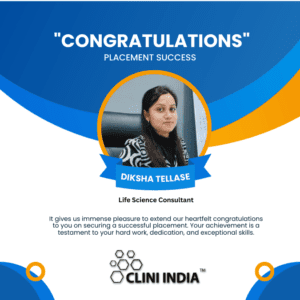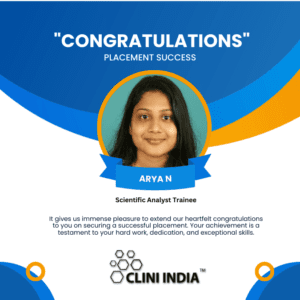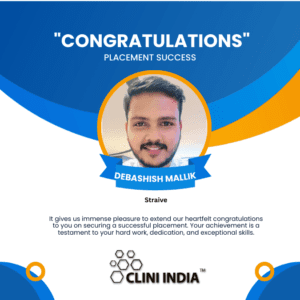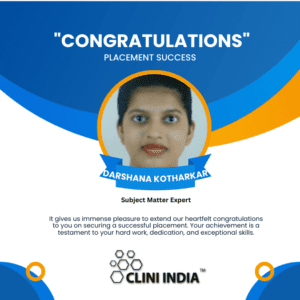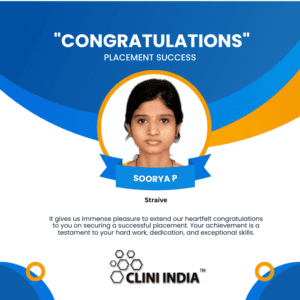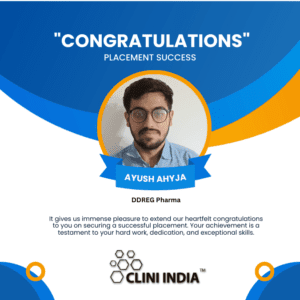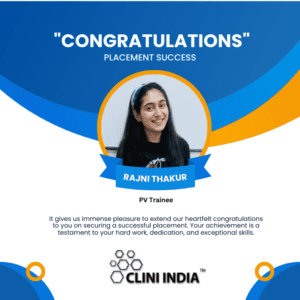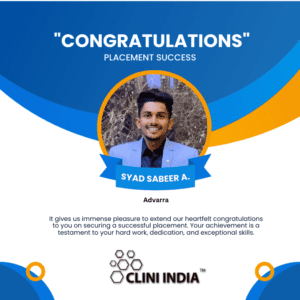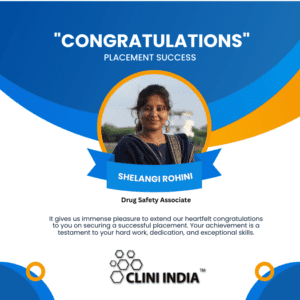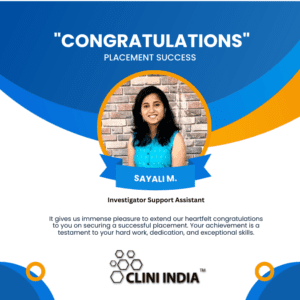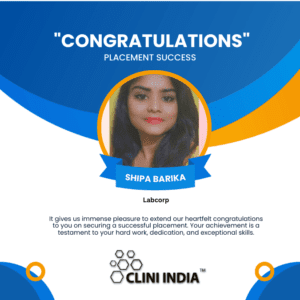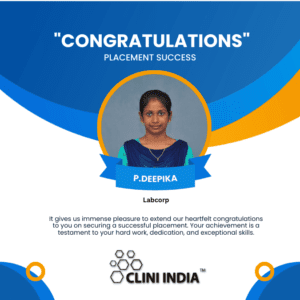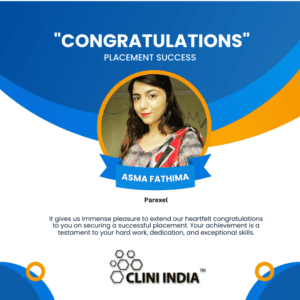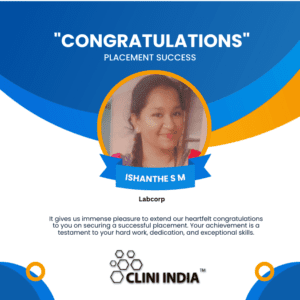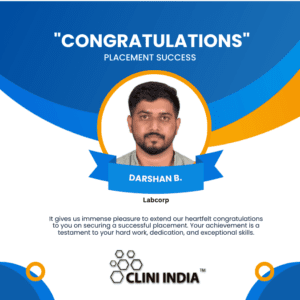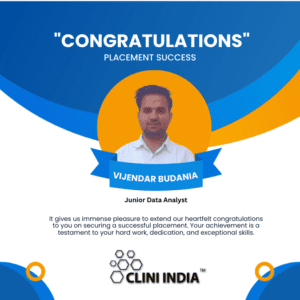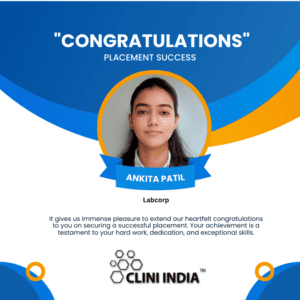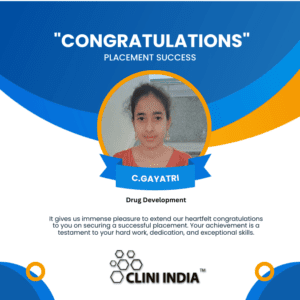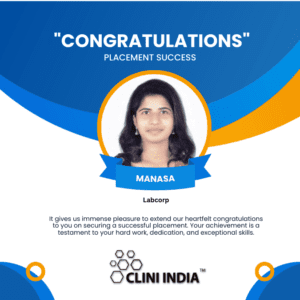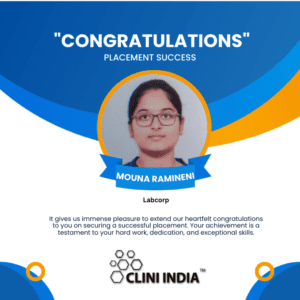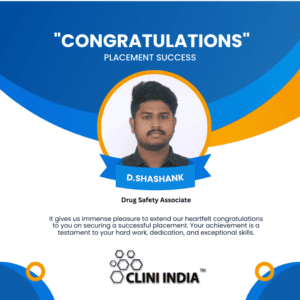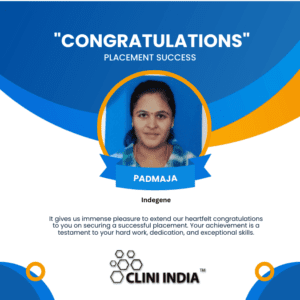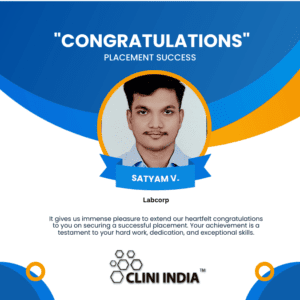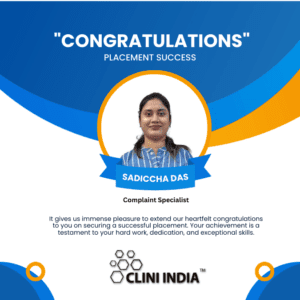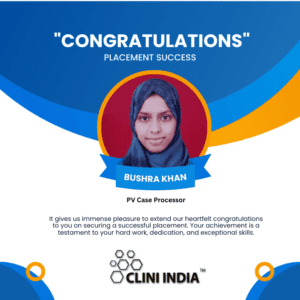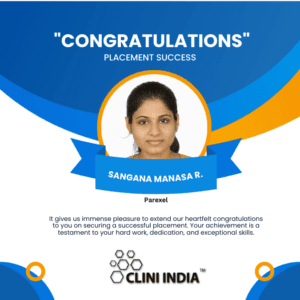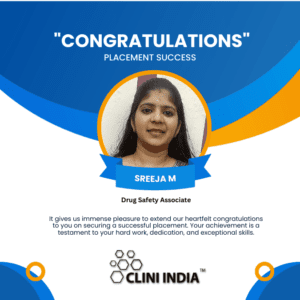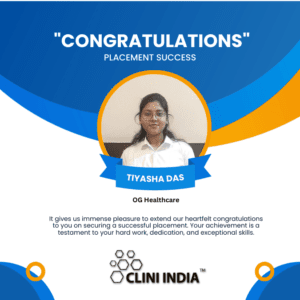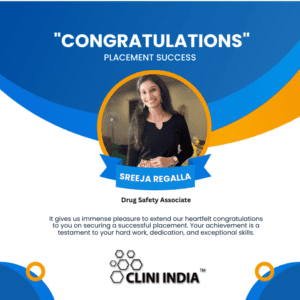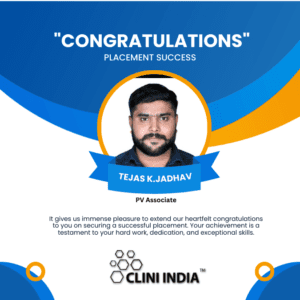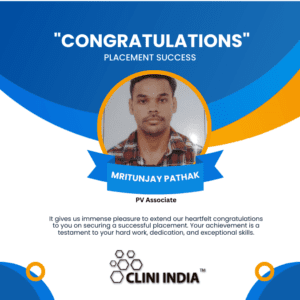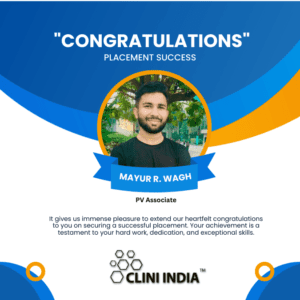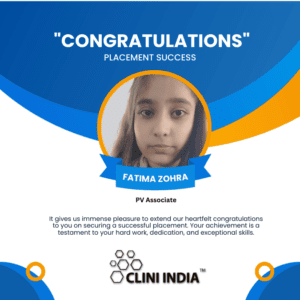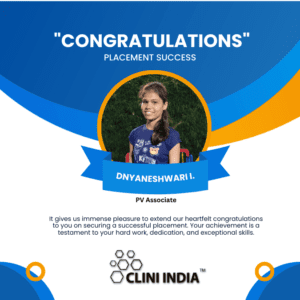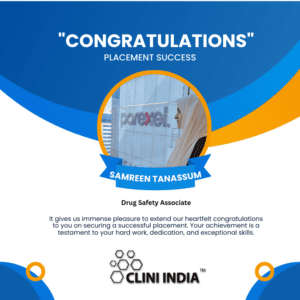Clinical Research Coordinator (CRC)
- What is Pharmacovigilance?
Pharmacovigilance is the science of collecting, monitoring, researching, assessing and evaluating information from healthcare providers and patients on the adverse effects of medications, biological products, herbalism and traditional medicines.
- What is the minimum criterion required for a valid case?
- An identifiable reporter
- An identifiable patient
- A suspect product
- An adverse drug event
- What is an Adverse Drug Event (ADE)?
Any untoward medical occurrence in a patient or clinical investigation subject administered a pharmaceutical product and which does not necessarily have to have a causal relationship with this treatment.
- What is an Adverse Drug Reaction (ADR)?
An adverse drug reaction is a “response to a drug which is noxious and unintended and which occurs at doses normally used in man for prophylaxis, diagnosis, or therapy of disease or for the modification of physiologic function.” Note that there is a causal link between a drug and an adverse drug reaction. In sum, an adverse drug reaction is harm directly caused by the drug at normal doses, during normal use.
- What is the difference between an ADE and ADR?
There may not be a causal relationship between a drug and an ADE, whereas, there is a causal link between a drug and an adverse drug reaction.
- When do you consider an event to be serious?
If an event is associated with any one of the following, it is considered to be serious
- Death
- Life threatening
- Hospitalization or prolongation of hospitalization.
- Congenital anomaly
- Disability
- Medically significant
- Name the regulatory bodies in USA, UK, Japan and India?
USA: United States Food and drug administration (USFDA).
UK: European Medicines Agency (EMEA).
Japan: Ministry of Health, Labour and Welfare (MHLW).
India: Central Drugs Standard Control Organization (CDSCO)
- What is Volume 9A?
Volume 9A brings together general guidance on the requirements, procedures, roles and activities in the field of pharmacovigilance, for both Marketing Authorisation Holders (MAH) and Competent Authorities of medicinal products for human use; it incorporates international agreements reached within the framework of the International Conference on Harmonisation (ICH).
Volume 9A is presented in four parts:
Part I deals with Guidelines for Marketing Authorisation Holders;
Part II deals with Guidelines for Competent Authorities and the Agency;
Part III provides the Guidelines for the electronic exchange of pharmacovigilance in the EU
Part IV provides Guidelines on pharmacovigilance communication.
- When do you consider a case to be medically confirmed?
A case is considered to be medically confirmed if it contains at least one event confirmed or reported by an HCP (Health Care Professional)
Note: HCP can be a physician, nurse, pharmacist, coroner or psychologist (only in Germany).
- What do you mean by causality?
Causality is the relationship between a set of factors. In Pharmacovigilance, causality is the relationship between the suspect product and the adverse drug event.
- Name some data elements in ICSR?
Patient demographics: Age, gender and race.
Suspect product details: Drug, dose, dosage form, therapy dates, therapy duration and indication. Adverse event details: Event, event onset date, seriousness criterion, event end date and latency.
- What should a narrative consist of?
A narrative should consist of precise and concise information about the source of report, patient demographics, patient’s medical history, concomitant medications, suspect product details and adverse event details in an orderly manner.
- What do you mean by MedDRA?
Medical Dictionary for Regulatory Activities.
- Explain the hierarchy in MedDRA.
System Organ Class (SOC)
High Level Group Term (HLGT)
High Level Term (HLT)
Preferred Term (PT)
Lower Level Term (LLT)
- Abbreviations
- SUSAR
Suspected Unexpected Serious Adverse Reaction
- SAE
Serious Adverse Event
- CIOMS
Council for International Organizations of Medical Sciences
- ADE
Adverse Drug Event
- SSAR
Suspected Serious Adverse Reaction
- ADR
Adverse Drug Reaction
- ICSR
Individual Case Safety Report
- PSUR
Periodic Safety Update Report
- ICH
The International Conference on Harmonisation of Technical Requirements for
Registration of Pharmaceuticals for Human Use
- HIPAA
Health Insurance Portability and Accountability Act
- ESTRI
Electronic Standards for the Transfer of Regulatory Information
- IBD
International Birth Date
- What do you know about E2a, E2b and E2c guidelines?
E2a: E2a guidelines give standard definitions and terminology for key aspects of clinical safety reporting. It also gives guidance on mechanisms for handling expedited (rapid) reporting of adverse drug reactions in the investigational phase of drug development.
E2b: E2b guidelines for the maintenance of clinical safety data management and information about the data elements for transmission of Individual Case Safety Reports.
E2c: E2b guidelines for the maintenance of clinical safety data management and information about the Periodic Safety Update Reports for marketed drugs.
Where to Study?
CLINI INDIA-Academy for Clinical Research and Management
104 EPIP Zone, Level 2, Prestige Omega,
Whitefield, Bangalore

